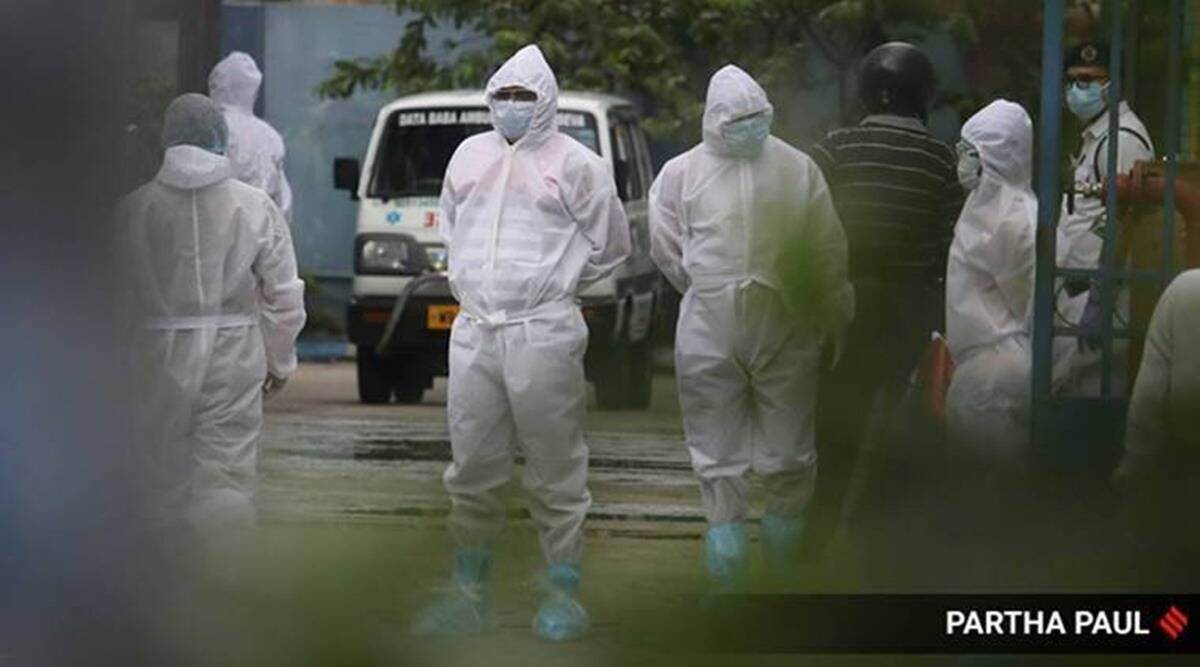 everal factors distinguish the handling of the pandemic in the state.
everal factors distinguish the handling of the pandemic in the state.It is now nine months since we got the first case of COVID-19 in Uttar Pradesh. When the virus arrived in the state, people were extremely apprehensive about UP’s capacity to handle a pandemic. After all, UP has a population of approximately 24 crore, the highest in any Indian state. Its population is exceeded by only four countries in the world and is more than that of many European countries combined. Several factors distinguish the handling of the pandemic in the state but I aim to discuss a few in this article.
Of the many innovative steps taken there are three clear winners. First is the setting up of Team 11 — a group of 11 senior government officials tasked with managing different aspects like surveillance and contact tracing, testing and treatment, sanitisation, containment, enforcement, doorstep delivery, issues of migrants, communication strategy, etc — in March itself. The CM has been chairing the meetings of Team 11 almost every day for over eight months now. Ministers in charge of Health and Medical Education are also present at these meetings. The daily review meeting has kept the state machinery on its toes.
The second winner is the Integrated Covid Command and Control Centre (ICCC) set up in every district. This is the nerve centre of pandemic management in the district, sending testing teams to different areas as per plan, ensuring surveillance and contact tracing, sending positive patients to different Covid hospitals or placing them under home isolation. The ICCC has a fully functional call centre to coordinate different activities like admissions, monitoring home isolation cases, surveillance and contact tracing, besides providing guidance to people at large. Continuous monitoring of patients in home quarantine has been an extremely helpful step.
The third winner is the integrated data management portal (upcovid19tracks.in). It provides us with the ability to crunch and analyse data on a daily basis. It has helped the state monitor surveillance and contact tracing, key tools to contain the spread of the virus, and cajole the districts lagging behind to improve their performance. In fact, the efforts to increase contact tracing by the state came in for praise by the World Health Organisation. Through this portal, we are also able to provide test results to citizens at the click of a mouse. The other important digital initiative is an app that informs citizens about the nearest COVID-19 test centres where they can get themselves tested free of cost.
Let me also discuss two strategic interventions, out of many, which we have taken. The first is the widespread use of the drug, ivermectin, not just for treatment of cases but also as a prophylactic. The state government provides free medicines to all patients in home isolation or in government COVID-19 facilities, which have more than 1.5 lakh beds. We have used the combination of ivermectin and doxycyclin to successfully treat over three lakh home-isolated patients with mild symptoms so far. This combination has also been used by the hospitals across the state for admitted COVID-19 patients. But what is more interesting is the state’s successful use of ivermectin as a prophylactic.
In the beginning of the pandemic, the Agra model of containment had been hailed for its efficiency. But with a spurt of cases in May-June, there was a sense of despondency in the management team. That is when the team, relying on the wisdom of its young district surveillance officer who had been successfully using ivermectin as prophylactic for his rapid-response teams, started administering this medicine to the close contacts of positive cases in the district. This gave them positive results. We took note at the state headquarters, and asked a technical team to look into it. It recommended that it can be tried across the state as a prophylactic. Recognising the sense of urgency, we decided to go ahead. Many other states have also followed suit. Last month, AIIMS Bhubaneswar published a study that found that ivermectin had prophylactic functions but we have been using it in the state from July itself with considerable success.
The second strategic intervention is the targeted testing of selected groups. We started doing this in June with residents of urban slums, workers at nursing homes, pharmacy shops, bus and auto drivers, shopkeepers, security guards in malls, hospitals, etc. This helped us assess the level of infection in the general population and identify and isolate super-spreaders. Just before Karwa Chauth, Diwali and Bhai Dooj, we tested mehndi artists, beauty parlour workers, sweet shop workers, jewellers, utensil and electronic items sellers, those working at places of worship, roadside cracker vendors and were able to isolate more than 12,500 infected persons. They could have given us at least additional 75,000 cases and a resultant second wave. Currently, in view of the marriage seasons, we are testing caterers, marriage hall staff, band players, DJs etc to isolate possible super-spreaders!
Kerala’s population is less than a sixth of that of UP but it got more than 11,000 cases in a day during its peak; Delhi has a population less than one-eighth of UP but it got more than 8,000 cases in a day but UP during its peak had a maximum count of approximately 7,200 only. It would be important to point out that we test above 1.5 lakh samples a day — more than 2.18 crore samples have been tested so far. The state has been able to keep the positivity rate below 5 per cent throughout the pandemic. When the phrase “ruthless containment” was in fashion in March, I would joke that we need strategic containment as we cannot afford to be as ruthless as the virus! We have now seen the benefits of doing things differently.
The author is an IAS officer currently serving as additional chief secretary, health, government of UP. Views are personal